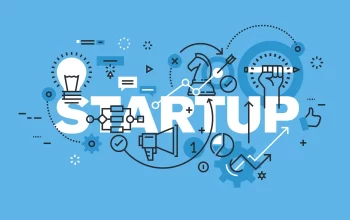Let’s be honest—data is the new gold. But mining it without violating trust? That’s the real challenge. For privacy-first startups, the line between monetization and exploitation is razor-thin. Here’s how to walk it without stumbling.
Why Ethics Matter in Data Monetization
Think of customer data like a borrowed book. You wouldn’t scribble in it, sell it without permission, or pretend you wrote it. Same rules apply here. Ethical data monetization isn’t just about compliance—it’s about building lasting relationships.
Key reasons to prioritize ethics:
- Trust erosion is permanent. One scandal, and you’re the villain.
- Regulations are tightening. GDPR, CCPA—they’re just the beginning.
- Customers demand transparency. 79% will abandon a brand over data misuse (Cisco, 2023).
5 Ethical Data Monetization Strategies
1. Anonymized Aggregation: The “Mosaic” Approach
Instead of selling individual data points, bundle them into anonymous trends. Imagine a weather app selling “umbrella demand patterns” by zip code—not Joe’s lunchtime stroll to the store.
How to implement:
- Strip all PII (Personally Identifiable Information)
- Require minimum group sizes (e.g., no reports on groups under 50 users)
- Add noise to prevent re-identification
2. Consent-Driven Marketplaces
Let users choose which data to sell—and take a cut. It’s like eBay for data, where your startup plays matchmaker between willing sellers (users) and buyers (brands).
Real-world example: Brave Browser’s Basic Attention Token (BAT) rewards users for ad engagement data.
3. Federated Learning: Data Never Leaves Devices
Here’s the sci-fi part: train AI models on user devices without exporting raw data. Like a chef learning recipes by visiting kitchens—but never taking ingredients home.
Best for: Startups in healthcare, finance, or any field handling sensitive data.
4. Subscription-Based Insights
Flip the script—charge enterprises for privacy-safe analytics instead of selling data. Think of it as selling the map, not the territory.
Monetization models:
- Tiered access to dashboards
- Custom report generation
- Predictive analytics APIs
5. Data Clean Rooms
These are neutral zones where companies analyze combined data without seeing each other’s raw info. Like two chefs blending sauces—while blindfolded.
Who’s using this: Retailers comparing foot traffic patterns without sharing customer lists.
Common Pitfalls to Avoid
Even with good intentions, mistakes happen. Watch out for:
- The “anonymization myth”—Latitude, longitude, and birthdate can identify 87% of Americans (Harvard study)
- Dark patterns in consent forms—Pre-ticked boxes don’t equal enthusiasm
- Scope creep—Using data beyond what was originally promised
Building Trust Through Design
Transparency isn’t a policy—it’s an experience. Some startups nail this:
| Feature | Trust-Boosting Effect |
| Real-time data receipts | “You shared X with Y at 2:34PM” |
| One-click data exports | Proves you’re not hiding anything |
| Plain-language policies | No 50-page legalese documents |
The Future: Privacy as a Premium
We’re entering an era where ethical data practices will command higher prices—like organic food or fair-trade coffee. Startups that bake privacy into their DNA now will own the premium segment tomorrow.
Because in the end, the most valuable data asset isn’t in your servers—it’s in your customers’ willingness to say, “Yes, you can.”





